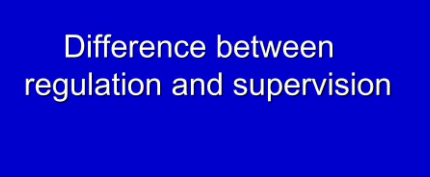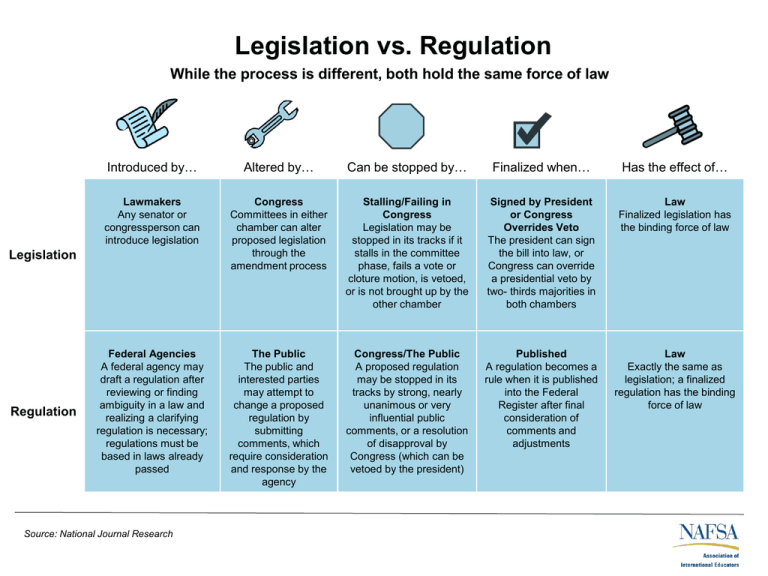Difference Between Law And Regulation
The Difference Between Law and Regulation
When it comes to governing our societies and ensuring order, two terms that often come up are "law" and "regulation." While they may seem similar, understanding their differences is crucial. Laws and regulations serve different purposes and have distinct characteristics that shape our legal systems. In this article, we will delve into the variances between laws and regulations, exploring their significance and impact.
The Definition of Laws and Regulations

Simply put, laws are a set of rules that are established and enforced by a governing authority, such as a nation or state. They provide a framework for acceptable behavior within a society and often carry legal consequences if violated. Regulations, on the other hand, are specific rules or requirements that are issued by an administrative agency to implement and clarify laws. While they are derived from laws, regulations typically focus on the practical details of enforcement and compliance.
Differences in Scope and Authority

One key distinction between laws and regulations lies in their scope and authority. Laws tend to be broader in nature, covering a wide range of issues and applying to an entire jurisdiction. They are usually passed by legislative bodies, such as parliaments or congresses, and require more extensive procedures for approval. Regulations, on the other hand, are more specific and target particular industries, professions, or activities. They are often created by executive agencies and possess a narrower focus.
For example, a law may establish the legal driving age for a country, while the regulations would outline the specific requirements for obtaining a driver's license. Laws have a higher level of authority and are generally considered more binding than regulations.
The Role of Laws and Regulations in Society
Laws are the backbone of any legal system and play a fundamental role in maintaining order and promoting justice. They provide a framework for resolving disputes, protecting individual rights, and defining the boundaries of acceptable behavior. Laws are often developed through a democratic process, reflecting the values and priorities of a society.
Regulations, on the other hand, offer a more practical approach to implementing laws. They provide detailed guidelines and procedures for enforcing the broader principles established by laws. Regulations help in standardizing practices, ensuring public safety, and addressing specific needs within various industries or sectors.
FAQs About the Difference Between Law and Regulation
1. Are regulations legally binding?
Yes, regulations are legally binding. They carry the same weight as laws, although they focus on providing detailed implementation guidelines.
2. Can regulations exist without laws?
No, regulations derive their authority from laws. They cannot exist independently and are created to enforce and clarify existing laws.
3. Which is more flexible, laws or regulations?
Regulations are often more flexible as they can be updated or modified more easily than laws. This allows them to adapt to changing circumstances and address specific situations.
In Conclusion
While both laws and regulations are essential components of any legal system, it is crucial to understand their distinctions. Laws provide the foundation and broader principles for governing a society, while regulations offer specific guidelines for their implementation. By comprehending their differences, we can appreciate the intricate workings of our legal systems and the role they play in shaping our everyday lives.
Difference Between Legislation And Regulation With Table
 Image Source : whatmaster.com
Image Source : whatmaster.com legislation regulation
Difference Between Act And Law | Comparison Of Definition, Features
 Image Source : www.pinterest.com
Image Source : www.pinterest.com laws pediaa marathi
Презентация "Is It Easy To Be Young ?" - скачать бесплатно
Legislation Vs. Regulation
 Image Source : studylib.net
Image Source : studylib.net legislation
Laws Vs. Regulations And Why The Difference Matters - Indivisible
 Image Source : indivisiblesb.org
Image Source : indivisiblesb.org laws regulations vs difference matters why rules
Regulation: What It Is, Functions, Types And Characteristics
 Image Source : crgsoft.com
Image Source : crgsoft.com What Is The Difference Between Rules And Regulations - Pediaa.Com In
 Image Source : www.pinterest.com
Image Source : www.pinterest.com pediaa regulations
Introducing Rules And Laws - Parliamentary Education Office
 Image Source : mail.peo.gov.au
Image Source : mail.peo.gov.au What is the difference between rules and regulations. Difference between legislation and regulation with table. Difference between act and law. Legislation regulation. Introducing rules and laws